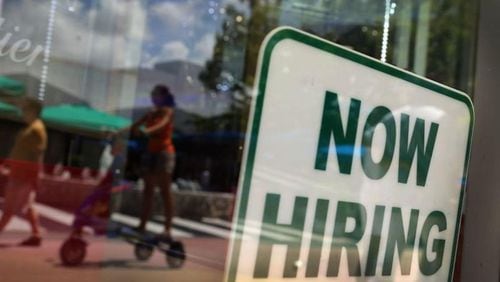Georgia's unemployment rate started the year at 5.5 percent in January, the same rate as in December, the state labor department said Thursday.
However, the state added 6,500 jobs during the month, more than average for a January.
"While the rate was unchanged, our employers continued to create jobs, our labor force continued to grow and more people went to work," said Mark Butler, the state labor commissioner. "This is a good way to start off a new year."
Despite adding jobs, the unemployment rate did not fall because more people are in the labor force, looking for work.
And finding it, said Larry Feinstein, chief executive of Hire Dynamics, a Duluth-based staffing company. "There are more jobs than candidates. It is taking us longer to find the right people."
Among the signs of improvement: It takes less time now for companies to shift temporary hires to full-time, he said.
Here are seven ways to sound smart in talking about Georgia’s jobless rate:
1. Look in the rear view mirror. Georgia unemployment rate a year ago was 5.6 percent, so on the surface, it may look as if the job market hasn't gotten much better. But in those 12 months, the economy has added 114,700 jobs. The unemployment rate hasn't gone done more mainly because a lot more people are in the labor force, looking for work.
2. Compare us to the big American picture. Georgia's rate is still significantly above the national rate of 4.8 percent. It has not been below the national average since 2007, which was before the economy slipped into recession.
Despite that, the pace of job growth in Georgia is faster than the nation expansion.
3. Compare us to years past. It was stronger than an average January for job growth. During the five previous years, from December January, the number of jobs in the state grew by an average of 6,100.
4. Take the really long view. When things were really bad – coming out of the 2007-09 recession – the Georgia jobless rate was 10.5 percent. That represents nearly a half-million people and it doesn't include tens of thousands of people who dropped out of the labor force or went back to school.
The jobless rate before the recession was below 5.0 percent. The very lowest rate on record for the state was in November of 2000: 3.4 percent.
5. Remember what unemployed means. Despite nearly seven years of job growth, in Georgia's workforce of about 4.9 million people, there are still more than a quarter-million Georgians looking for work.
The estimated number of Georgians who were unemployed in December but actively looking for work was more than 276,000.
That is far lower than it was during the worst of the jobs crisis. But a historically high share of the unemployed have been looking for more than six months. And anyone not actively looking for work is not officially counted as unemployed.
6. Talk about the strong sectors.
A broad swath of sectors added jobs.
The sectors adding the most employees were financial, which grew by 4,300; leisure and hospitality, up 4,200; trade, transportation and warehousing – that is, the logistics sector – growing 3,700; government, expanding by 1,600; manufacturing, up 1,100; and construction, growing 900.
7. Talk about the weak sectors.
Some job losses came in the corporate sector, down 7,700; education and health services, shedding 1,100; and other services such as repair, maintenance, laundry and personal services, which lost 1,000.
For more details on unemployment rates in different areas of Georgia, click here.
And here.
For Randstad's report on hot jobs, click here.
The Georgia Department of Labor and the Cherokee County Office of Economic Development will co-sponsor the county's 3rd annual career expo next Wednesday, March 15, in Canton.
The expo will be held from 2-6 p.m. at the Northside Hospital-Cherokee Conference Center located at 1130 Bluffs Parkway. An updated list of employers can be found by clicking here. Or, for the state labor site, clicking here and then on "upcoming events."
THE JOBS PICTURE IN GEORGIA
Percentage point change in jobless rate
December to January
2006 up 0.5
2007 down 0.7
2008 down 3.1
2009 down 1.6
2010 down 0.1
2011 up 0.8
2012 up 1.0
2013 up 1.1
2014 up 1.0
2015 up 0.7
2016 up 0.1
2017 unchanged
Job change, month of January
2006 10,500
2007 17,500
2008 6,900
2009 -27,500
2010 -5,300
2011 -25,200
2012 7,900
2013 12,400
2014 10,400
2015 -500
2016 100
2017 6,500
Job change, January to January
2006 105,100
2007 78,500
2008 15,900
2009 – 174,800
2010 -162,400
2011 10,700
2012 72,700
2013 73,600
2014 87,200
2015 126,700
2016 119,300
2017 114,700
Source: Bureau of Labor Statistics, State Department of Labor
_________________________
About the Author







